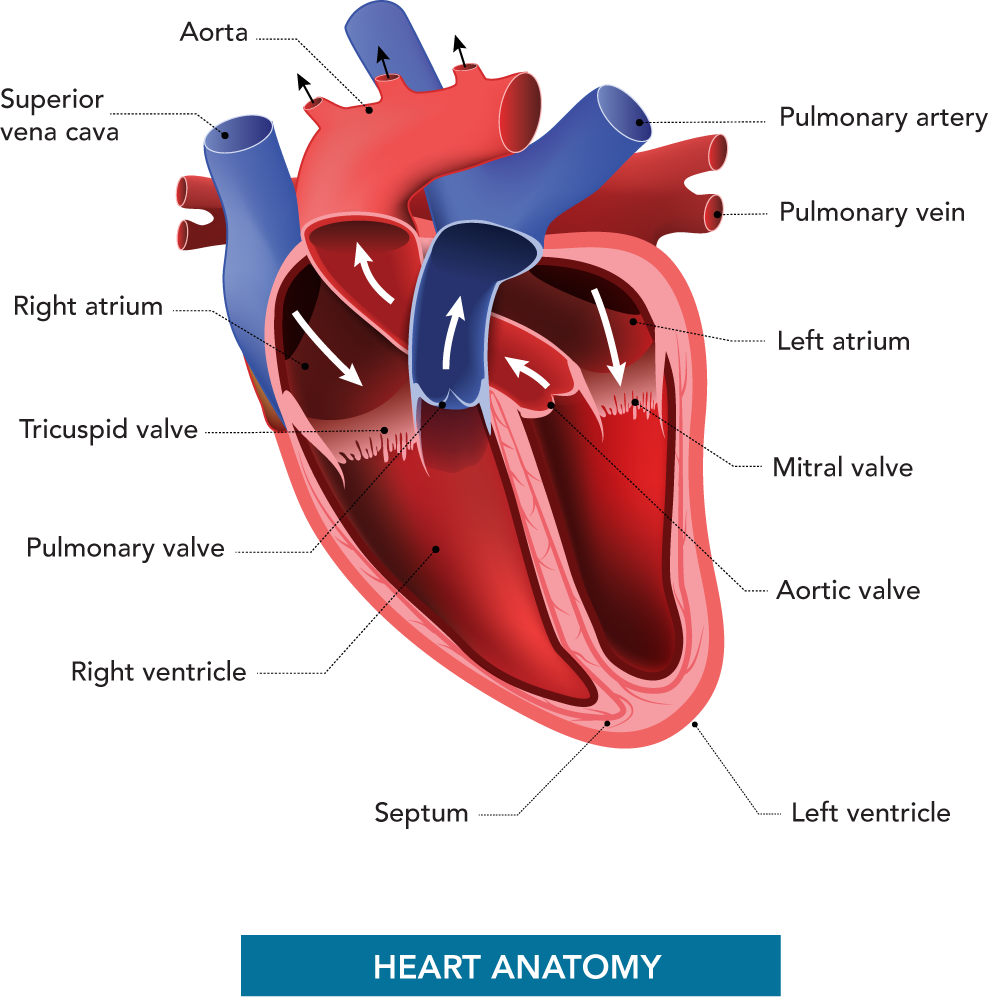Overview
If the valve is badly affected and there is severe stenosis or regurgitation, this can be treated by valve surgery. Often the surgical treatment involves the replacement of the valve with either a tissue valve or a mechanical heart valve. In some instances, the surgeon can repair the valve.
The most common valve that can be repaired surgically is the mitral valve that is leaking, and occasionally repair can be carried out for the leaking tricuspid or aortic valve as well.
- Generally, if the valve can be repaired, it would be preferable to repair it rather than replace it.
- A valve that is well repaired can function almost like a normal valve, can last for a long time and the patient does not need anticoagulation therapy.
- If the valve cannot be repaired, the surgeon can replace the valve with a tissue valve or a mechanical valve.
- Anticoagulation therapy is not required in tissue valve replacement but has issues of long-term durability. Some patients will require a second replacement surgery when the tissue valve deteriorates after 10 years.
- Mechanical valve replacement has long-term durability but patients will need to take lifelong anticoagulation to prevent clotting on the valve. If clotting happens, this can lead to a stroke or a jammed valve.
- The choice of type of valve replacement will depend on the patient’s age, associated medical problems, and gender. There is a preference for females who plan to become pregnant and have children, to have a tissue valve so that they can avoid anticoagulation during pregnancy.

What happens before surgery?

Patients will have their heart and health status assessed. These can include a number of tests including ECG, echocardiogram, coronary angiogram (in patients where there is a need to exclude coronary artery disease), lung function test and blood tests. The feasibility of valve repair will be discussed between the surgeon and the patient, but the final decision is usually made during the surgery. If the valve is not repairable, then it would need to be replaced.

Dental clearance is useful as it is preferable for dental treatment to be carried out first, if required, before the surgery.

If the patient is a smoker, then it would be best to stop smoking at least a month before the surgery.

A list of instructions will be given prior to surgery. These may include instructions to stop blood thinning medication several days before the surgery to reduce the risk of bleeding during and immediately after the surgery.

Patients will be assessed by the surgeon and anaesthetist prior to surgery and will be asked to fast for at least 8 hours before the surgery.
The surgery : what to expect?
The valve surgery is done under general anaesthesia.
- The patient will not be aware during the surgery. The conventional approach is the routine open method, but minimally invasive surgery (with a smaller incision) can be done in some patients.
- During the surgery, an echo probe is passed through the mouth into the oesophagus (the swallowing tube between the mouth and stomach), to visualise the affected valve and to assist the surgeon in the repair of the valve.
- Most patients will have a ring or band sutured to the base of the valve to tighten the valve. The echo probe placed in the oesophagus can be used to assess the results of repair.
- If the surgeon determines that the valve cannot be repaired, then it must be replaced with either a tissue or mechanical valve (the type of valve would usually have been discussed and determined before the surgery).

Post OP and recovery

Admission

Surgery for 4 hours

Post Surgical stay in ICU for 1-2 days

Recovery in normal ward for 5-7 days

Discharge
Complications of valve repair surgery
The complications of any open heart surgery includes:
- Bleeding
- Breathing problems
- Infection
- Stroke
- Irregular heart rhythm
- Blood clots in the leg
After a valve repair surgery, the valve may leak again after a few years but in rare cases, the valve leakage may become severe again and a second surgery may be necessary. If so, the usual preference would be to replace the valve.
Leakage of valve





